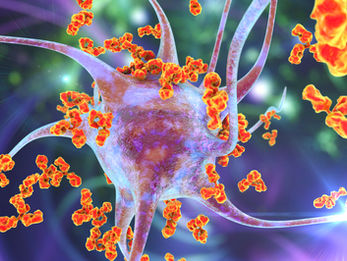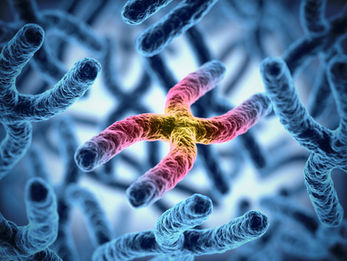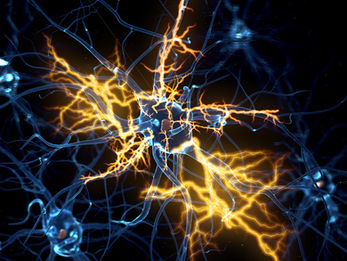top of page
BCIA Continuing Education Posts
The BioSource Faculty Explain Peer-Reviewed Science


John S. Anderson on Frequency vs. Amplitude
I wrote this post to clear up confusion about frequency and amplitude, and give you a basic format for thinking about the EEG signal.

John S. Anderson
Apr 1014 min read


Dr. John Davis Explains the Latest IQCB Guidelines
The IQCB guidelines formalize data collection, inspection, and analysis procedures to improve qEEG reliability and clinical acceptance.

John Davis
Apr 97 min read


5-Second Science: Thalamic Gatekeeping in Consciousness
The thalamus may act as a neural gatekeeper, filtering stimuli that enter conscious awareness.
BioSource Faculty
Apr 84 min read


5-Second Science: What Does Serotonin Signal?
Prospective value coding reconciles previous models of serotonin function.
BioSource Faculty
Apr 75 min read


5-Minute Science: Schizophrenia is Not a Single Disease
Schizophrenia represents multiple disorders—"schizophrenias"—each potentially with distinct biological underpinnings.
BioSource Faculty
Apr 75 min read


5-Min Science: Latest Findings on Alzheimer's Progression
The temporal and parietal lobes are the earliest affected, and the frontal and occipital lobes are the latest.
BioSource Faculty
Apr 65 min read


Understanding the Differences Between ADHD and ODD: A Guide for Clinicians
ADHD and ODD are distinct disorders with unique causes, symptoms, and treatment needs.

Zachary Meehan
Apr 66 min read


5-Minute Science: Network and Brodmann Area Dysregulation in ADHD (N=120)
ADHD is associated with hypocoherence in major neural networks, particularly the DMN, SalN, and AttDN.
Dr. Cynthia Kerson
Mar 126 min read


5-Minute Science: VLF Activity Is Not Sympathetic
SNS activity is too fast and irregular to be a primary driver of VLF rhythms.
BioSource Faculty
Mar 125 min read


5-Min Science: Thinking Doesn't Require Language Networks
Language allows us to share our thoughts and ideas with others, rather than being essential for thinking.
BioSource Faculty
Mar 115 min read


5-Min Science: Integrating Biofeedback and Neurofeedback
Integrating biofeedback and neurofeedback represents a promising frontier in physiological self-regulation approaches.

John Davis
Feb 276 min read


5-Second Science: Transient Ischemic Attacks Are Not Harmless
The medical community has mistakenly viewed transient ischemic attacks as relatively harmless events.
BioSource Faculty
Feb 262 min read


5-Second Science: Environment Influences Mortality More Strongly Than Genetics
Environmental and lifestyle factors accounted for 17% of disease mortality risk, while genetics contributed just 2%.
BioSource Faculty
Feb 262 min read


5-Second Science: Acetaminophen May Increase ADHD Risk
Fetal exposure to acetaminophen may increase the likelihood of developing attention-deficit/hyperactivity disorder (ADHD).
BioSource Faculty
Feb 252 min read


5-Second Science: Pupil Size Fluctuates As You Breathe
Pupil size fluctuates across the breathing cycle.
BioSource Faculty
Feb 251 min read


5-Min Science: The Neuroscience of Aha! Moments
Insights arise abruptly through conscious and unconscious processing, often characterized by a sudden restructuring of perception.
BioSource Faculty
Feb 2110 min read


5-Min Science: Positive Affect Therapy for Depression and Anxiety
Positive Affect Therapy (PAT) represents a paradigm shift in the treatment of mood and anxiety disorders.
BioSource Faculty
Feb 209 min read


5-Min Science: The Default Mode Network Does More Than Daydream
Far from being limited to pondering the self, this network activates when individuals infer the mental states of others.
BioSource Faculty
Feb 199 min read


5-Min Science: The Power of Combined Therapy for Depression
Cuijpers and colleagues (2021) emphasize the importance of integrating psychotherapy and medication in depression treatment.

Zachary Meehan
Feb 184 min read


5-Min Science: What You Should Know About Journavx for Acute Pain
Suzetrigine (Journavx) is a promising alternative to opioid analgesics for managing acute postoperative pain.
BioSource Faculty
Feb 145 min read
bottom of page
